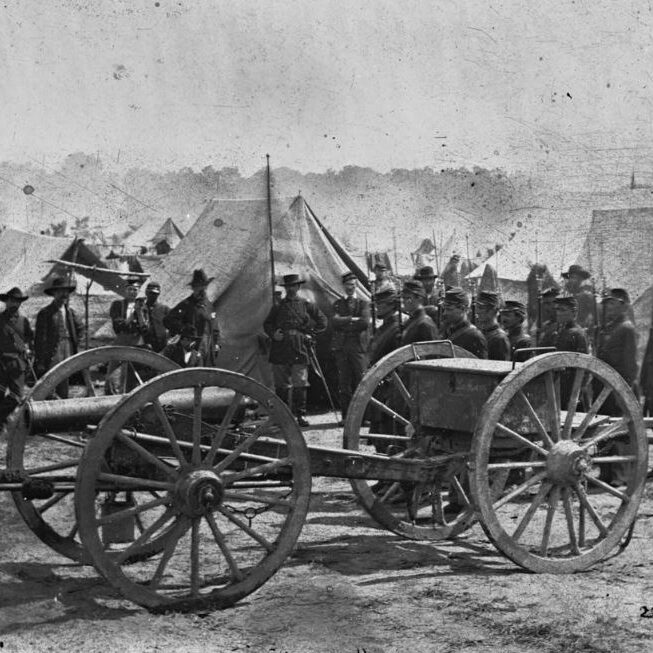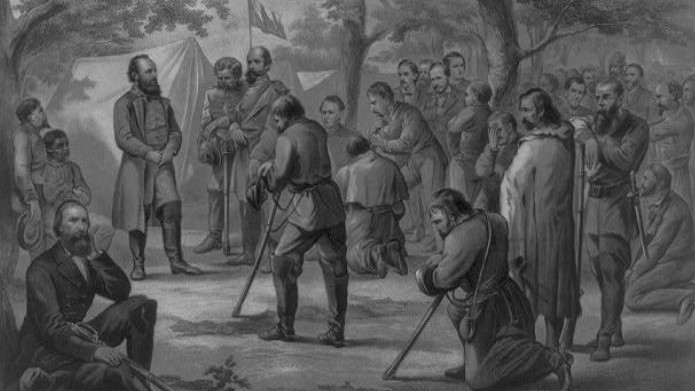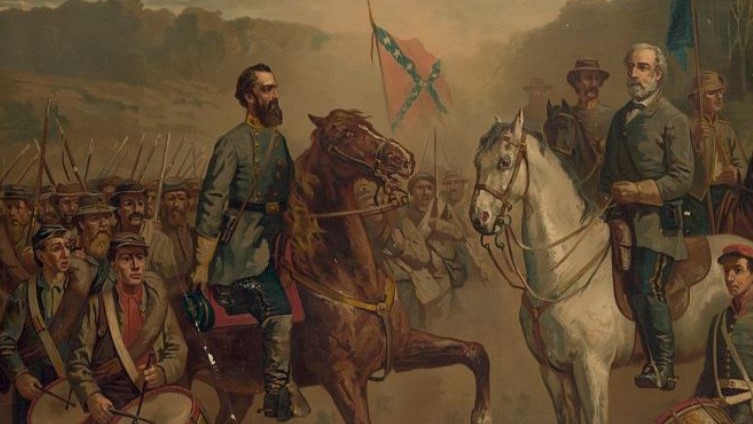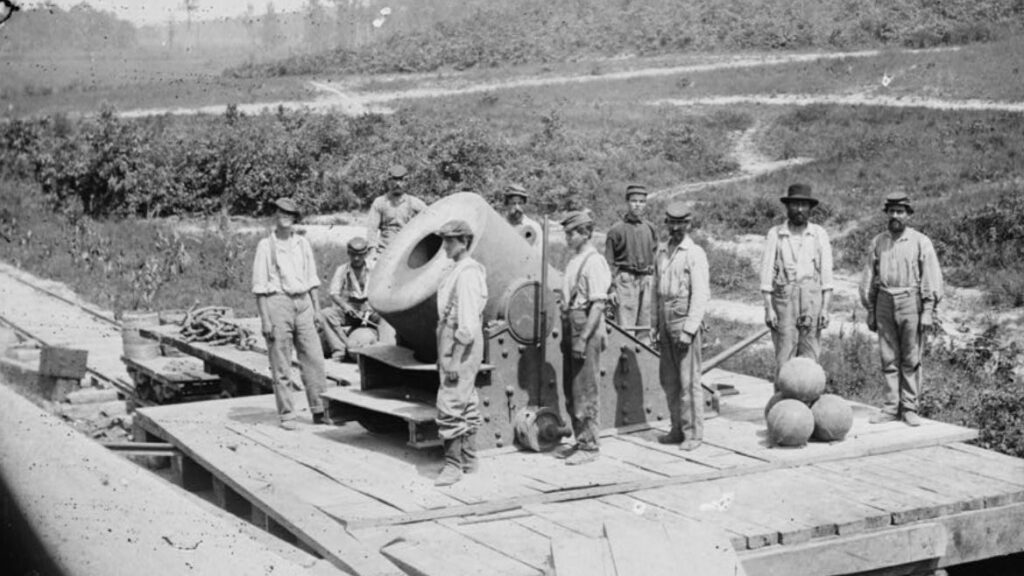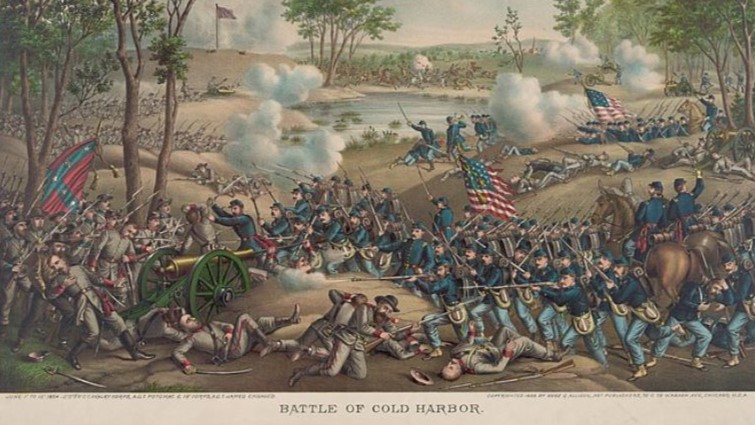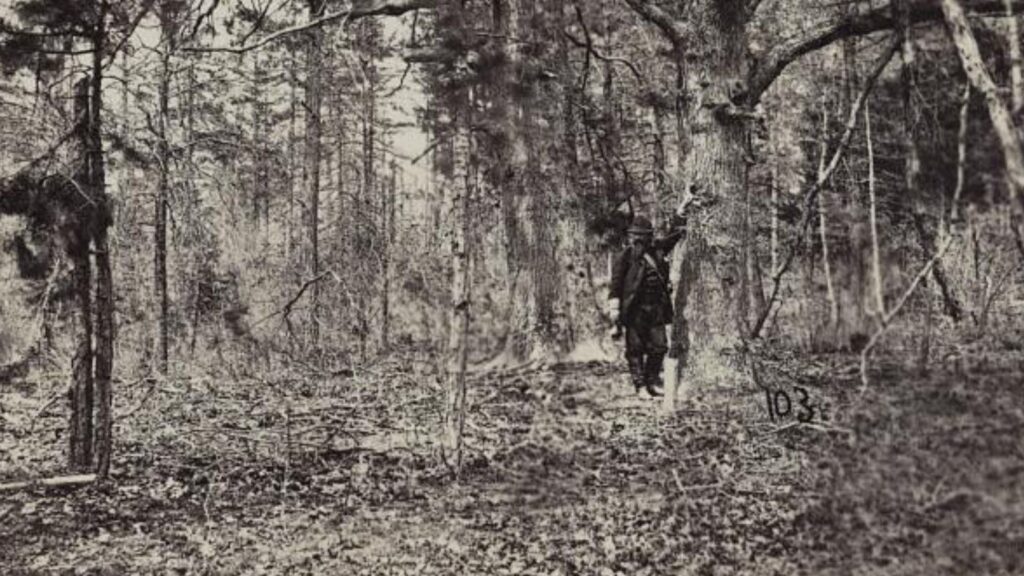The American Civil War (1861-1865) was a conflict between Northern and Southern states over issues like slavery, states’ rights, and economic differences. This conflict resulted in significant societal upheaval.
In this article we delve into the complexities of the American Civil War (1861–1865), exploring its multiple causes with slavery as a pivotal catalyst.
We will discuss the critical events, legislative actions, and influential figures that shaped this historic conflict.
- 1. Early Beginnings of Slavery (17th-18th Centuries)
- 2. Early Tensions (1776): Founding Debates
- 3. The Impact of the Louisiana Purchase of 1803 on Slavery
- 4. The Missouri Compromise of 1820
- 5. The Tariffs of 1828 and 1832
- 6. The Mexican-American War of 1846-1848 and The Compromise
- 9. The 1856 attack on Senator Charles Sumner
- 10. The Dred Scott Decision in 1857
- 11. John Brown's raid on Harper's Ferry in 1859
- 12. Election of 1860: Abraham Lincoln's Victory
- 13. Confederate forces attack Fort Sumter in 1861
- 14. The Causes of the Civil War: The Complex Interplay of Reasons
- Further Reading
1. Early Beginnings of Slavery (17th-18th Centuries)
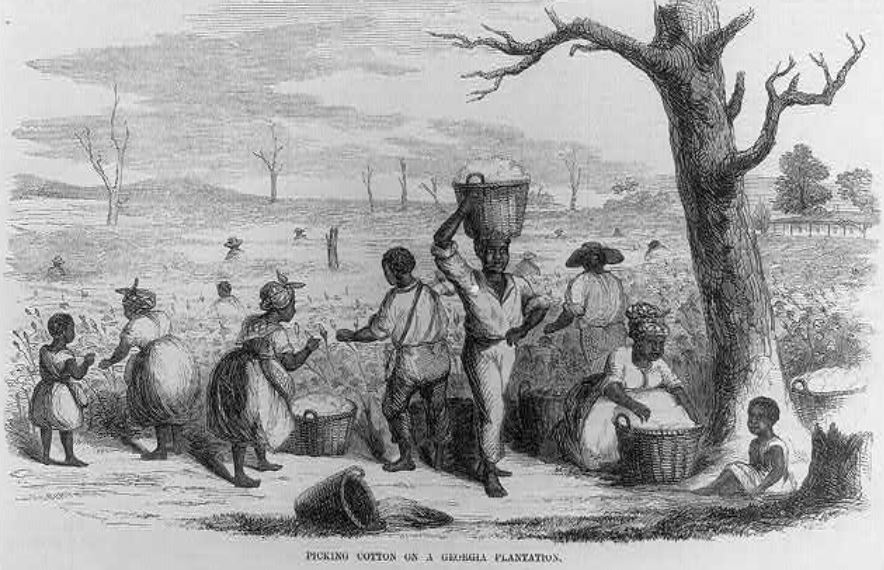
The beginnings of slavery in North America date back to the early colonial period of the 17th century.
As European colonists began establishing settlements in North America, many brought with them the practice of slavery.
In the British colonies, indentured servitude was more common during the 17th century. However, over time slavery became much more prevalent, especially on the tobacco, rice and indigo plantations in the Southern colonies.
The first African slaves arrived in Virginia in 1619. This marked the introduction of race-based hereditary slavery in the North American colonies.
Over the course of the 18th century, the trans-Atlantic slave trade brought hundreds of thousands of African slaves to North America against their will. It’s estimated that between 600,000 to 650,000 Africans were forcibly imported and sold into slavery in the American colonies between 1700 and 1775.
The vast majority were sent to work on labor-intensive plantations in the Southern colonies of Virginia, Maryland, South Carolina, North Carolina and Georgia.
There was some disagreement during the colonial period over the morality of slavery. For instance, slavery was actually banned in the British colony of Georgia from 1735 to 1750, before being legalized again due to economic pressures from plantation owners.
However, slave-based agriculture came to dominate the Southern colonies economically, making the practice very difficult to dismantle. This divide over slavery would eventually contribute to the outbreak of the Civil War almost a century later.
2. Early Tensions (1776): Founding Debates
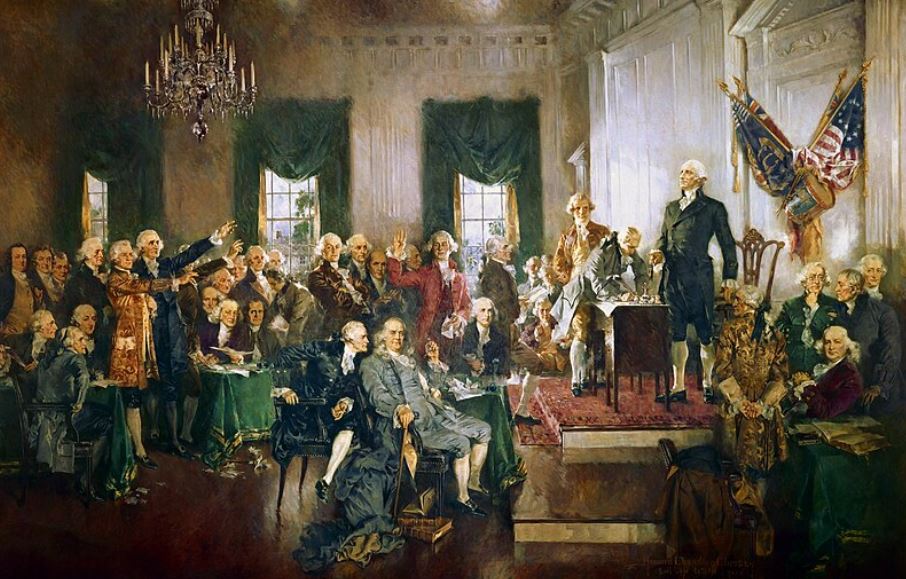
Even at the founding of the United States, contentious debates emerged over the future of slavery.
Many of the Founding Fathers grappled with the contradiction between the Enlightenment values of liberty and equality expressed in the Declaration of Independence, and the existence of slavery in the new nation.
This unease manifested in deliberations during the Constitutional Convention of 1787.
While northerners hoped for a gradual abolition of slavery, southerners demanded guarantees to protect the institution.
As a compromise, the Constitution allowed for the importation of slaves until 1808 and required northern states to return escaped slaves to their owners.
The Three-Fifths Compromise also gave southern states disproportionate representation by counting three-fifths of the slave population for purposes of taxation and representation.
During debate over the Northwest Ordinance of 1787, northerners were able to prohibit slavery in the Northwest Territories, setting an important precedent. However, there was no general consensus over restricting the further spread of slavery.
Those like Thomas Jefferson hoped to confine the institution to the South, where he believed it would gradually die out. But after the invention of the cotton gin in 1793, slavery became more profitable as cotton production expanded across the South.
3. The Impact of the Louisiana Purchase of 1803 on Slavery
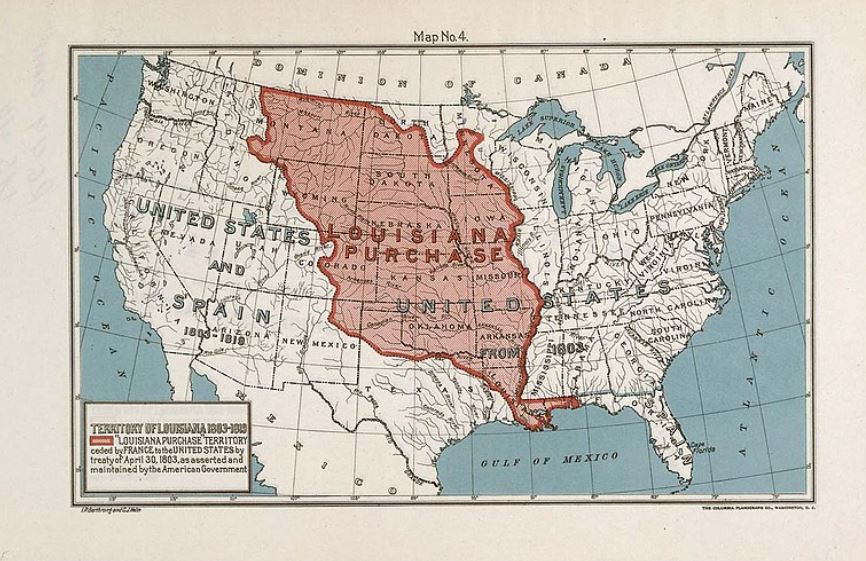
As new states entered the union in the early 19th century, disputes emerged over their status as slave or free states.
With the Louisiana Purchase of 1803, a vast Louisiana Territory was open to American expansion and fierce debates ensued over whether slavery would be permitted.
Vast new territory was opened to American expansion, nearly doubling the size of the country. This raised intense debates over whether slavery would be allowed in the Louisiana Territory.
Southerners pushed for slavery in Louisiana, believing it was necessary to maintain their way of life and equality in the Union. They argued Congress could not bar people from bringing slaves into the territories.
Northerners hoped to restrict slavery in much of the Louisiana Territory to limit the influence of slave states. The issue was left unsettled for years, until the Missouri Compromise banned slavery north of 36°30’ north.
Adding new states from the Louisiana Territory threatened to tip the balance between free and slave states. Both sides wanted to maintain parity to protect their interests in Congress.
Acquiring the port city of New Orleans also gave the South better access to cotton export markets. This facilitated the expansion of cotton cultivation and increased the demand for slaves.
The heated debate foreshadowed how westward expansion would continue to raise tensions around slavery in new territories and states. The Louisiana Purchase set the stage for compromises like the Missouri Compromise of 1820.
4. The Missouri Compromise of 1820
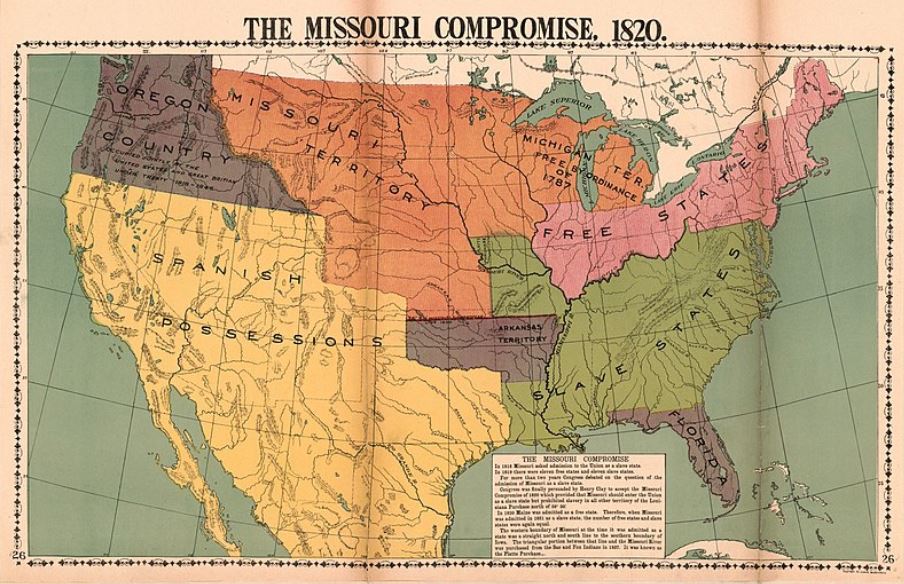
One of the defining events that heightened tensions over slavery in the early 19th century was the Missouri Compromise of 1820.
As the nation expanded westward, the question arose of whether new states would be admitted as free or slave states. This came to a head with Missouri’s 1819 petition for statehood as a slave state.
Missouri’s request threatened to disrupt the existing balance between 11 free states and 11 slave states.
Northerners opposed adding another slave state, fearing it would give the South disproportionate power in Congress. Southerners argued the federal government could not prohibit citizens from bringing slaves into new territories.
After considerable debate, Congress passed the Missouri Compromise, brokered by Senator Henry Clay.
Under the terms, Missouri would be admitted as a slave state. To balance this, Maine would be admitted as a free state. The rest of the Louisiana Territory north of the 36o30′ parallel would be free soil, with the exception of Missouri. South of the line, slavery was permitted.
While many saw the Compromise as a temporary solution, it also showed the deep divisions over the future of slavery.
Northerners resented the increased power slave states would gain. Southerners felt their rights to expand slavery were being infringed upon.
The Compromise maintained an uneasy balance for a time, but westward expansion would continue to raise tensions around slavery in the coming decades.
The Missouri Compromise set an important precedent of using geography to determine slave or free status in new states. However, this mounting antagonism showed approaching the slavery question cautiously through compromises was becoming more challenging.
As abolitionist sentiments rose in the North and pro-slavery interests hardened in the South, the Missouri Compromise highlighted the need for bolder action on one side or the other to resolve the deepening divide.
5. The Tariffs of 1828 and 1832
The federal tariffs enacted in 1828 and 1832 heightened the growing economic and political tensions between the North and South.
The Tariff of 1828, passed under President John Quincy Adams, placed high import taxes on foreign manufactured goods in order to protect Northern industries.
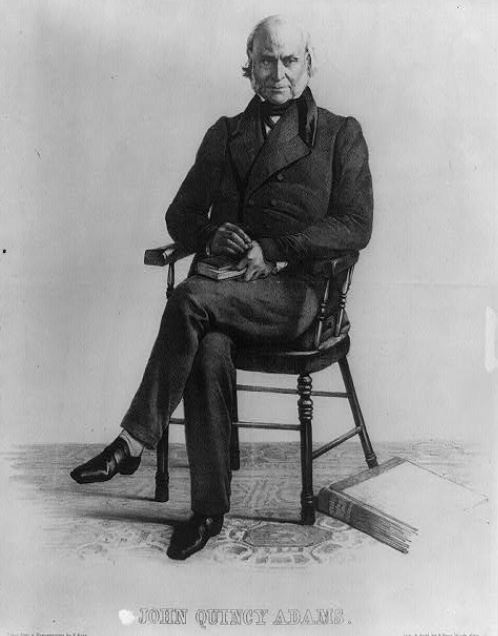
However, these tariffs harmed the export-focused Southern economy, which relied heavily on trade with Europe. Southern leaders argued the tariffs disproportionately affected the agricultural South while favoring Northern industry.
Vice President John C. Calhoun of South Carolina was a vocal critic of the 1828 “Tariff of Abominations.”
When another tariff passed in 1832, Calhoun argued it subjected the South to exploitation and discrimination. The South Carolina legislature declared the tariffs unconstitutional and threatened secession from the Union.
President Andrew Jackson refused to allow South Carolina to nullify federal law and threatened to send federal troops to enforce the tariffs. But Congress eventually passed a Compromise Tariff in 1833 that gradually reduced rates over ten years, resolving the crisis.
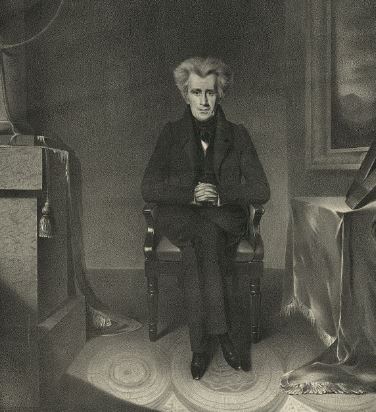
The Nullification Crisis illustrated the widening economic split between the North and South.
It also showed growing Southern resentment over economic policies from a Northern-dominated Congress that could threaten the Southern slave economy. Though temporarily resolved, the tariff disputes fueled regional divisions and a states’ rights debate that would continue in the lead up to the Civil War.
6. The Mexican-American War of 1846-1848 and The Compromise
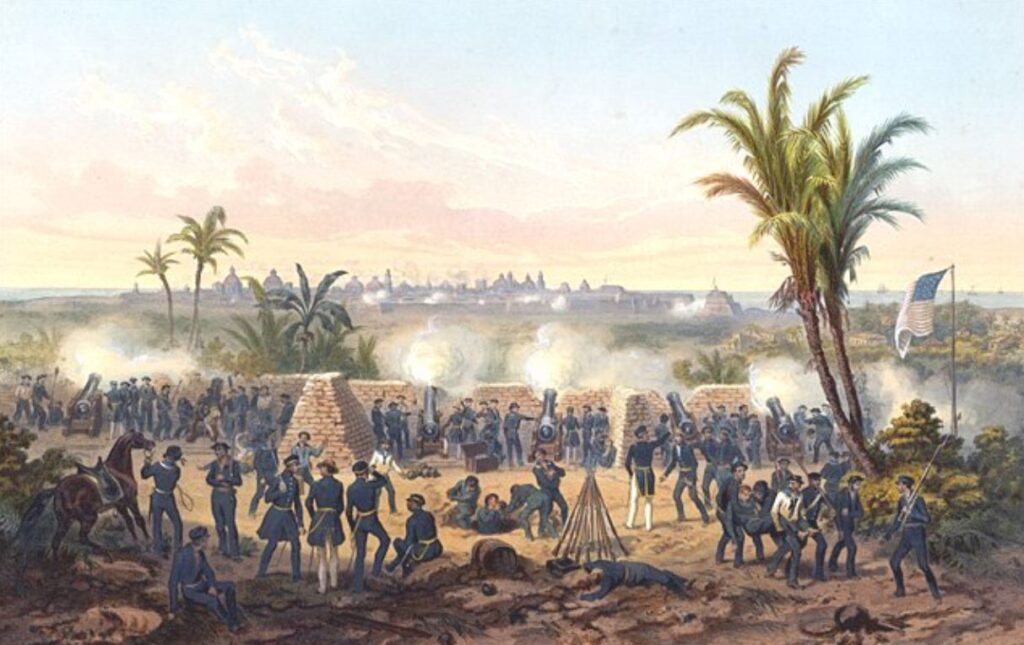
The Mexican-American War
The Mexican-American War from 1846-1848 resulted in vast new territories coming under American control in the West. This raised intense debates over whether these lands acquired from Mexico would permit slavery, further escalating tensions between the North and South.
The annexation of the Republic of Texas by the United States in 1845 had already heightened disputes over slavery and territorial claims. After the Mexican-American War ended in 1848 with Mexico ceding nearly all its land north of the Rio Grande, the issue arose of how best to incorporate and administer these new territories.
Many Northerners wanted to prohibit slavery in the region, citing the Missouri Compromise ban on slavery above the 36°30’ parallel.
But Southerners demanded no restrictions on bringing slaves into the Mexican Cession lands.

California’s application for admission as a free state also concerned Southerners who wanted a coast-to-coast belt allowing slavery.
The Compromise of 1850
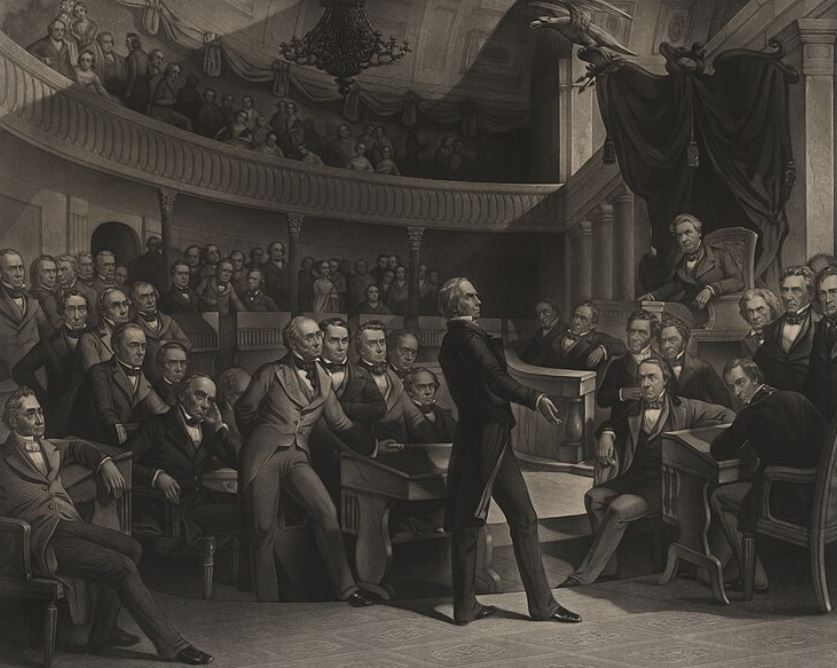
After contentious debates, Congress passed the Compromise of 1850 brokered by Henry Clay, Daniel Webster and Stephen A. Douglas.
This admitted California as a free state while allowing New Mexico and Utah to determine their slave or free status.
It included the strict Fugitive Slave Act.
The Fugitive Slave Act was a controversial federal law that gave slaveowners and bounty hunters broad powers to recapture escaped slaves in the North and return them to the South against their will. It proved to be one of the most polarizing elements of the Compromise of 1850.
Some of the provisions of Act included:
- It required law enforcement officials in free states to assist slaveowners or their agents in recapturing escaped slaves. Citizens were obligated to aid in the seizures.
- It denied slaves the right to request a jury trial or testify on their own behalf when seized under the law.
- Federal commissioners were appointed to handle return of escaped slaves, removing the process from state courts.
- Heavy fines were imposed on anyone assisting or harboring fugitive slaves.
- The law overrode northern personal liberty laws aimed at protecting free blacks from being kidnapped into slavery.
- By strictly enforcing the return of slaves who had escaped to the North, the law hoped to discourage slaves from attempting escape.
- Abolitionists nicknamed it the “Bloodhound Law” for using federal law enforcement to hunt down runaway slaves.
- The Fugitive Slave Act angered many northerners and increased anti-slavery sentiments, hastening the onset of war.
While the Compromise postponed further conflict, disputes arose again with the 1854 Kansas-Nebraska Act. The complex political debates over the disposition of the Mexican Cession demonstrated the mounting inability to resolve tensions over slavery through compromise. Ultimately, the unsettled issue would boil over into civil war just a decade later.
The Comprise of 1850 effectively delayed the onset of the American Civil War.
7. Uncle Tom’s Cabin
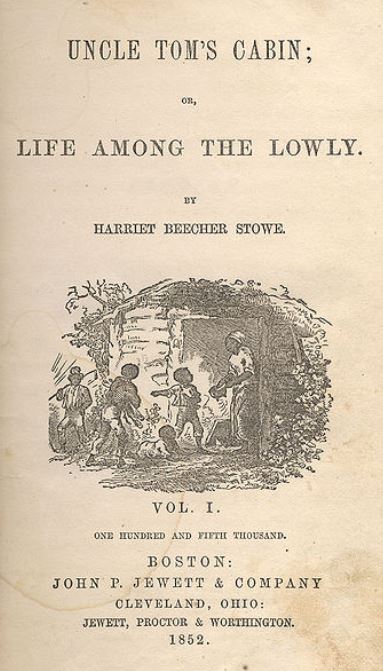
The 1852 novel Uncle Tom’s Cabin by Harriet Beecher Stowe played a major role in transforming Northern attitudes regarding slavery in the 1850s.
Though a work of fiction, the book personalized the experience of slavery for many Northerners for the first time.
Uncle Tom’s Cabin followed the journey of an elderly slave named Uncle Tom after he is sold away from his family. It depicted the cruel reality of slave life through Tom’s perilous odyssey down the Mississippi River. Stowe vividly portrayed the injustices suffered by slaves under the system.
The novel was an instant cultural phenomenon, selling over 300,000 copies in its first year and becoming the best-selling book of the 19th century aside from the Bible.
For many in the North, it evoked great sympathy for the plight of slaves and outrage over the Fugitive Slave Law. While Uncle Tom’s Cabin outraged Southerners.
Stowe’s novel galvanized many Northerners against slavery’s expansion. It also created further animosity between the sections, with Southerners rejecting the book as abolitionist propaganda. Uncle Tom’s Cabin played a significant role in hardening North-South divisions leading up to the Civil War.
8. Kansas-Nebraska Act and “Bleeding Kansas”
Bleeding Kansas refers to the violent conflict that erupted in Kansas Territory and western Missouri from 1854 to 1859 over whether Kansas would enter the Union as a free or slave state. It served as a prelude to the Civil War.
The roots of Bleeding Kansas trace back to the 1854 Kansas-Nebraska Act, which repealed the Missouri Compromise ban on slavery north of 36°30′ latitude. The act instituted popular sovereignty, allowing settlers in Kansas to vote on whether to allow slavery.
This set off a rush of pro-slavery and anti-slavery settlers into Kansas seeking to influence the vote.
Pro-slavery “Border Ruffians” from Missouri flooded Kansas and skewed early elections in favor of slavery, provoking Northern abolitionists like John Brown to counter migrate.
Tensions escalated as both sides established rival governments. Pro-slavery settlers formed a legislature in Pawnee that invalidated free-state victories, while Free-Staters created a constitution in Topeka banning slavery.
Four competing constitutions emerged, with irregularities and fraud surrounding votes.
Starting in 1856, violence increasingly broke out between armed groups from both sides. The Wakarusa War marked the first military skirmish. Pro-slavery forces later sacked Lawrence, and John Brown retaliated by murdering five pro-slavery men at Pottawatomie Creek.
The pro-slavery Lecompton Constitution, drafted in 1857, sought to make Kansas a slave state against many settlers’ wishes. Kansas voters rejected the constitution in 1858, but it still went to Congress for approval. The anti-slavery movement exploited public outrage over the Lecompton Constitution to convince Congress to reject it as well. This defeat discredited popular sovereignty and was an important victory for the anti-slavery cause, further polarizing the slavery debate in the late 1850s.
The anarchy continued for years despite Kansas entering the Union as a free state in 1861. The guerrilla warfare and political turmoil came to epitomize the breakdown of compromise and depth of divisions over slavery in this turbulent period before the Civil War.
9. The 1856 attack on Senator Charles Sumner
The 1856 attack on Senator Charles Sumner was a key event demonstrating the breakdown of civility in Congress over the slavery issue in the years before the Civil War.
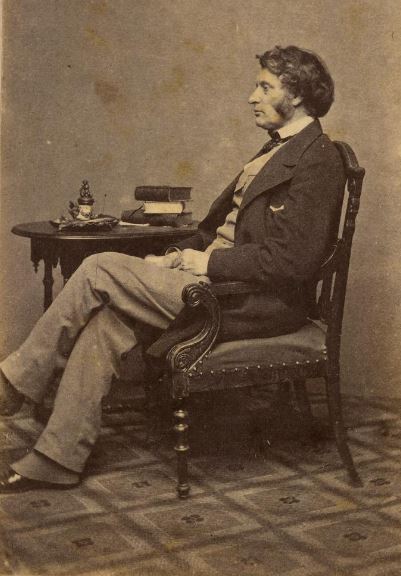
In May 1856, Senator Sumner of Massachusetts gave an impassioned speech on the Senate floor denouncing the Kansas-Nebraska Act and verbally attacking authors of the legislation along with South Carolina Senator Andrew Butler.
Two days later, Representative Preston Brooks of South Carolina, who was Butler’s cousin, violently beat Sumner with a cane on the Senate floor until he was bloody and unconscious. The assault was in retaliation for Sumner’s speech.
Sumner suffered severe injuries and chronic health problems, being unable to return to the Senate for several years. Sumner became regarded as a martyr for the abolitionist cause.
The shocking attack, which occurred right on the Senate floor, showed how much decorum had deteriorated in Congress surrounding the slavery debate. It signaled that violence was replacing civil discourse as positions became more entrenched, propelling the nation closer to Civil War.
10. The Dred Scott Decision in 1857
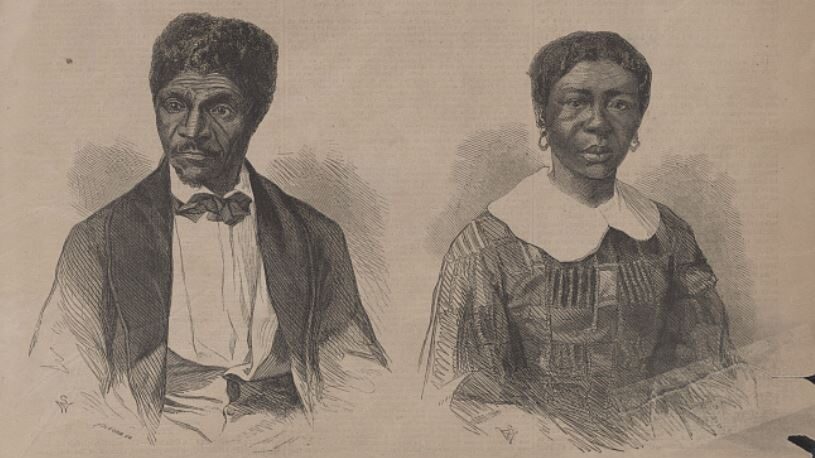
The 1857 Supreme Court case Dred Scott v. Sandford was a major event that heightened tensions over slavery in the years leading up to the Civil War.
In this ruling, the Supreme Court decided that Dred Scott, an enslaved Black man who had lived for years with his owner in free territories, was not entitled to his freedom.
The Court ruled that no Blacks, free or enslaved, were American citizens and therefore had no standing to sue in federal courts. Furthermore, the Court decided that Congress could not prohibit slavery in federal territories.
The Dred Scott decision outraged abolitionists and heightened sectional conflicts.
Northerners viewed it as an overreach of judicial authority that legalized slavery throughout the country. Southerners welcomed the ruling as protecting the right to bring slaves into all western territories.
The case helped propel the slavery debate closer to civil war by escalating tensions and eliminating compromise options.
It convinced many that a firm moral stand was needed, rather than continuing to accommodate the interests of both sides. The Dred Scott decision was a pivotal event showing how the slavery dispute had infected national institutions like the Supreme Court, making peaceful resolutions increasingly difficult in the late 1850s.
11. John Brown’s raid on Harper’s Ferry in 1859
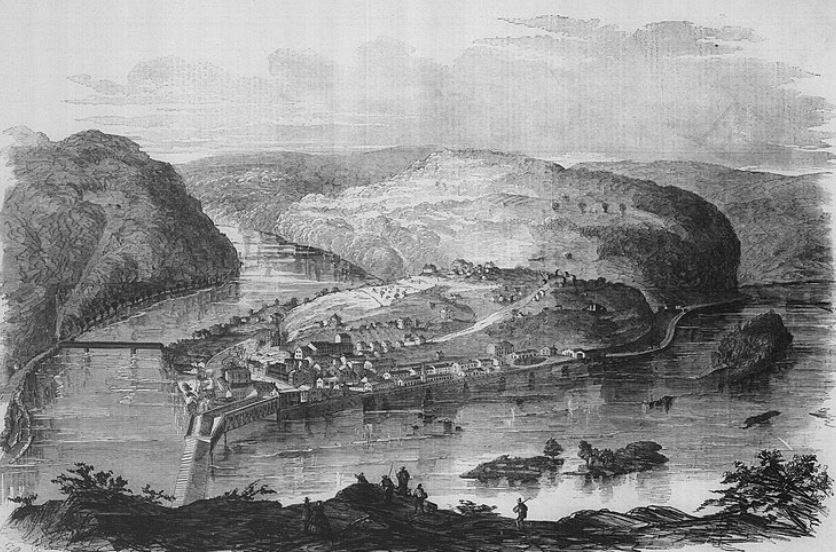
John Brown’s raid on the federal arsenal at Harpers Ferry, Virginia in October 1859 was a dramatic act that heightened tensions between the North and South on the eve of the Civil War.
Brown was a militant abolitionist who led an armed group in an attempt to initiate a slave rebellion by seizing the arsenal.
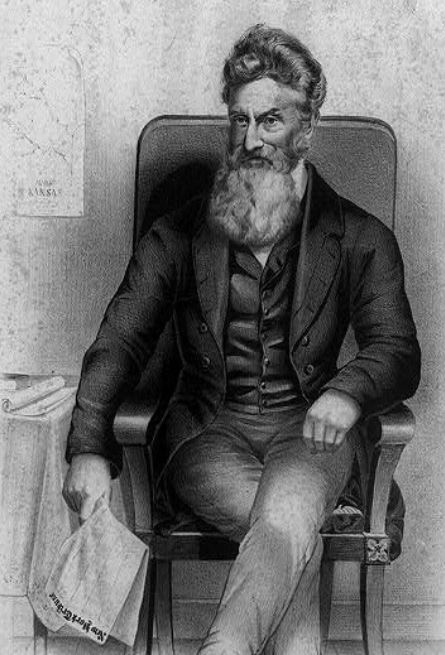
Though Brown’s raid was quickly suppressed, it caused panic in the South and was seen as evidence of abolitionist plots against the slave system.
Southerners reacted with outrage and demanded stepped up security.
For many, Brown’s raid confirmed the impossibility of peaceful coexistence, with the nation being driven toward inevitable conflict over slavery.
While initially condemned in the North, Brown was eventually viewed by many as a martyr, with his raid helping to convince Northerners that more forceful action against slavery was necessary.
The divisive impact of this event emphasized the gravity of the differences pulling the nation apart.
12. Election of 1860: Abraham Lincoln’s Victory
The election of Abraham Lincoln as president in 1860 was a pivotal event highlighting the deep divisions over slavery and setting the stage for the Civil War.
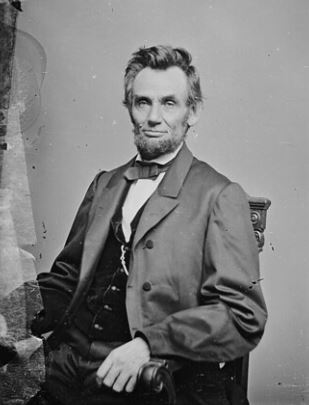
Heading into the 1860 election, the slavery issue continued to dominate and factionalize national politics.
Lincoln ran as the Republican nominee, a relatively new party opposed to slavery’s extension into the western territories. His victory with only 40 percent of the popular vote alarmed Southerners.
The 1860 election revealed an evenly divided nation geographically and politically.
Lincoln did not even appear on ballots in most Southern states. His victory without a single Southern electoral vote convinced Southerners that their interests were irreconcilable with the North.
With a Republican president unacceptable to the South now elected, Southern leaders argued secession was their only recourse. Even before Lincoln’s inauguration in March 1861, seven Southern states declared secession from the Union and formed the Confederate States of America. They claimed Lincoln threatened to abolish slavery and violate their constitutional rights.
The election itself did not immediately trigger war, but clearly signaled its approach, with secession and the Confederacy’s formation following swiftly.
13. Confederate forces attack Fort Sumter in 1861

Tensions finally boiled over in April 1861 when Confederate forces demanded the surrender of the federal garrison at Fort Sumter in Charleston, South Carolina.
After the fort’s commander refused to vacate, Confederate artillery bombarded the fort for nearly two days before it surrendered.
This attack on federal property provoked Northern outrage. In response, President Lincoln called for 75,000 volunteers to suppress the Southern rebellion.
This fateful decision ignited four years of bloody civil war between the Union and the breakaway Confederate States.
The attack on Fort Sumter marked the point of no return, transforming the political crisis over Lincoln’s election and Southern secession into an unprecedented military conflict that would cost over 600,000 lives.
14. The Causes of the Civil War: The Complex Interplay of Reasons
The origins of the American Civil War lay in the complex interplay of tensions that emerged in the events prior to 1861.
While the war was ultimately sparked by Confederate attack on Fort Sumter, many factors over time escalated tensions to the breaking point.
Legislative compromises like the Missouri Compromise and the Compromise of 1850 postponed conflict but illustrated the inability to resolve fundamental differences over slavery.
Westward expansion repeatedly forced the slavery question back to the forefront, sparking sectional confrontations.
Cultural phenomena like Uncle Tom’s Cabin reshaped public attitudes toward slavery, making compromise more difficult.
Whilst, Violent events such as Bleeding Kansas and John Brown’s raid convinced many that peaceful reconciliation was impossible.
This complex intermix of tensions ultimately made the Civil War inevitable.
Further Reading
If you enjoyed this article, you may be interested to read more about the American Civil War events, or perhaps read about the how the North won the war or what would have happened had the South won. Read here to find out more about the bloodiest battles of the Civil War. Read here for more general American history.

